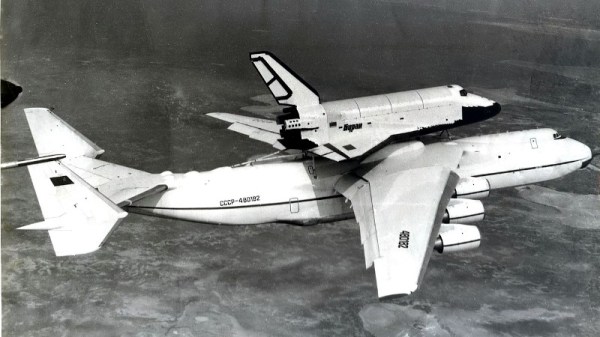Something that probably unites most Hackaday readers is a love of machines, particularly unique or interesting ones. In the world of aircraft for example, we’ve run several stories about those which push the edges of the size envelope, be they the Hughes Hercules troop carrier, the Scaled Composites Stratolifter space launcher, or the Antonov An-225 Mriya cargo plane. This last machine has been in the news for all the wrong reasons over the last few days, with reports emerging that it may have been destroyed in the fighting around its base at Hostomel near Kyiv. There has been some uncertainty around this news as it has alternately been claimed to have been destroyed or to have miraculously survived, but now a set of photographs have emerged showing what appears to be the An-225 burning in its damaged hangar.
The An-225 is a unique aircraft not only in the sense that there is no other model quite like it, but also because it was manufactured for the special purpose of being the transport carrier of the Soviet Union’s Buran space shuttle, and thus only one airframe was completed. Its characteristic twin tail served to avoid the turbulence that would have resulted from a Buran mounted on top of its enormous fuselage, and the six engine configuration required to move such a behemoth was in part the clue to identifying it in the photograph. Those readers who were lucky enough to see it take off or land in person will attest to its impressive physical presence, while the rest of us remain sad to have missed that chance.
It seems crass to talk about the destruction of an aircraft when compared to the scale of the unfolding tragedy in Ukraine, but we think perhaps our British and French readers who grew up with Concorde in the sky will understand the power of such a machine as a source of pride. We hope that the Antonov company will return to the design of huge cargo aircraft in peacetime, and Ukranians can again have pride in a monster aircraft that the rest of us will drive for miles just to watch taking off or landing.
The issue of which aircraft is the world’s largest can be a complex one, as we’ve explored in the past.
Header image: Vasiliy Koba, CC BY-SA 4.0.












